Ryan Hall's Blog, page 239
June 29, 2016
America’s Toughest Trail: The Manitou Incline
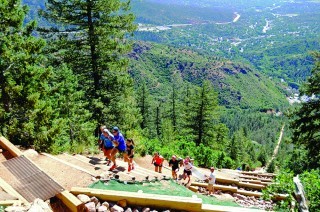
Photo: Brian Metzler
When it comes to describing the Manitou Incline, there’s no mincing words. It’s relentlessly steep and a ferocious challenge for anyone who tries to hike or run it.
Situated near the base of Pikes Peak in Manitou Springs, Colo., the Manitou Incline rises more than 2,000 vertical feet in less than a mile. It’s unyieldingly steep—68 percent in some places—but that’s why runners and hikers from near and far have been taking the challenge for years.
The trail sits on the site of an old funicular railway that took sightseers up one of the lower flanks of Pikes Peak. The tourist railway existed from 1907 to 1990, but a rockslide damaged some of the rails and railroad ties and it was shut down. Almost immediately upon its closure, the Incline became a destination for hikers and runners.
By 2012 the route fell into disrepair from heavy use and erosion, forcing a temporary closure for repairs and the replacement of the old railroad ties with modern landscaping timbers.
While it takes the average hiker more than 90 minutes to make it to the summit, a well-trained runner can reach the top in less than 30. But that requires an all-out leg- and lung-burning effort.
“It’s beyond relentless,” says Peter Maksimow, an elite-level mountain runner who lives nearby in Manitou Springs. “Whether you are a world-class athlete or a weekend warrior, the Incline has a way of humbling you. No matter how fast or slow you go, it’s really just about surviving. It’s one of the most challenging things you’ll ever do.”
Colorado Springs trail runner Joe Gray, who owns numerous top-10 finishes in international mountain races, ran the fastest known time (FKT) on the Incline last summer when he reached the top of the 0.88-mile route in 17 minutes and 45 seconds. Although other unsubstantiated faster times have been reported, Gray’s time surpassed the longstanding 18:31 mark of mountain running legend and 12-time Pikes Peak Marathon champion Matt Carpenter. Manitou Springs resident Allie McLaughlin, a member of the 2014 U.S. Mountain Running Team, owns the fastest women’s time, 20:07, which she set in 2010.
There are also some crazy records on the Incline that don’t necessarily involve speed. Roger Austin, a 50-year-old Colorado Springs hiker, completed a record-setting 1,719 ascents on the Incline in 2015, while Brandon Stapanowich, a 31-year-old Manitou Springs ultrarunner, did 22 laps up the Incline and down the Barr Trail in 24 hours in 2014.
“You can see it from anywhere in the city, so it just taunts you until you do it,” Stapanowich says. “And even after you do it, it’s still there waiting for you, challenging you to go faster or to do it more times. And that’s kind of how I got into doing multiple laps on it.”
The only secrets to the Incline? Just keep putting one foot in front of the other. It helps to look down at the steps—don’t consider enjoying the view until you reach the top. And never underestimate the effort.
“I’ve had a few people stand right in front of me and tell me they could easily go under 20 minutes,” McLaughlin says. “I don’t argue, I just say something like ‘yeah, you should totally go do that!’ Their thoughts usually are very different after they finish it for the first time.”
PHOTOS: The Relentlessly Steep Manitou Incline
VIDEO: The Allure of the Manitou Incline
The post America’s Toughest Trail: The Manitou Incline appeared first on Competitor.com.
Trail of the Week: Beach Trail, San Clemente, California
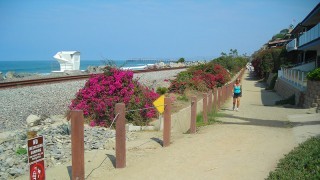
Consider this more of a vacation-y, soak-it-all-in trail run that’s a reminder of all the beauty this world has to offer.
For those looking for a beach getaway, San Clemente, Calif., is a quiet gem in the middle of population-crazy Southern California. Its unique location gives it the atmosphere of a throwback beach town with great scenery, perfect weather and friendly people.
The city of a little more than 60,000 residents sits on the southern edge of Orange County, putting it about equidistant between Los Angeles and San Diego. Directly to the town’s south is Camp Pendleton, the expansive Marine Corps base that serves as a natural transition between Orange County and San Diego County.
San Clemente is known for being the summer home of former U.S. President Richard Nixon. But it’s also famous for its spectacular beaches, which is why this particular trail is so special.
The Beach Trail is about 2.3 miles long, so an out-and-back run can creep close to 5 miles. It is mostly flat, never strays far from the beach, and often parallels the train tracks that run literally steps from the ocean throughout San Clemente’s coastline.
There’s a good amount of parking on the north end of the trail, which can be accessed off the I-5 via the Avenida Pico exit. From there, run south on the mild dirt terrain, crossing over a couple of bridges and running in the shadows of million-dollar homes on the bluffs overlooking the Pacific Ocean.
The trail can get a little crowded in the summer, in particular around the famous San Clemente Pier, which is a hot spot for tourists and locals alike. But you can frequently spot dozens of surfers catching waves, stand-up paddleboarders and even dolphins from the trail. There’s a good chance an Amtrak or Metrolink train could roar by during your run. It’s a trail that you’ll finish with a smile on your face.
RELATED: Trail Running in San Luis Obispo, California
The post Trail of the Week: Beach Trail, San Clemente, California appeared first on Competitor.com.
Nike Unveils Innovative Team USA Olympic Track Gear
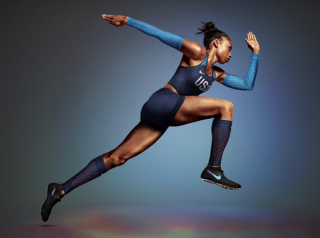
With the U.S. Olympic Trials track and field championships set to begin this on July 1 and the Rio de Janeiro Olympic Games themselves a little more than a month away, Nike took the occasion to roll out innovative new shoes and apparel at its Ultimate Innovation press unveiling in New York City on June 28. The photo gallery below highlights some of the gear and innovations Nike elite athletes and the U.S. Olympic track and field team will be wearing this summer.
RELATED: Inspired Gear for a Summer of Speed and Celebration
Photo Gallery
1 of {count}
Back to Start
View Larger Image

2016 Nike Team USA Gear
The Olympic track uniforms continue the basically single color scheme of
recent years, albeit with several shades of blue in subtle horizontal
stripes, prompting four-time Olympian Jackie Joyner-Kersee, who was in
Manhattan for the event, to say, “I wish we’d get some red and white
in there too – after all, that’s our flag’s colors!” (In this photo, sprinter Allyson Felix wearing a Nike Vapor track and field kit with Nike AeroSwift technology and Nike Zoom Superfly Flyknit spikes.) Photo: Courtesy of Nike
View Larger Image

2016 Nike Team USA Gear
The Team USA uniforms do include tiny flecks of red, but these are not just
cosmetic, but functional. Shown here in a black prototype, the tiny triangular spikes are called AeroBlades, and vary in size and density depending on their location on the uniform, and are intended
to reduce aerodynamic drag or wind resistance. Photo: Courtesy of Nike
View Larger Image

2016 Nike Team USA Gear
Nike also created adhesive tape strips with AeroBlades that athletes can affix directly to their bodies in the areas known to produce the highest wind resistance. Nike arrived at the shape of the silicone-based blades by using a 3-D printer to build prototypes and testing hundreds of different shapes in a wind tunnel. (In this picture, hurdler Omar McLeod wears Nike AeroSwfit Tape during a race at the 2016 Prefontaine Classic in May.) Photo: Courtesy of Nike
View Larger Image

2016 Nike Team USA Gear
Also unveiled were new sunglasses called the Nike Wing. The glasses
feature a single-piece, hinge-less lens designed to reduce drag, weight
four grams less than traditional eyewear, and only allow red light
through, which Nike says provides a calming effect to the runner. Photo: Courtesy of Nike
View Larger Image

2016 Nike Team USA Gear
The marquee shoe of the bunch is the Nike Zoom Superfly spikes made for sprinters. By using a design algorithm Nike came up with a honeycomb design which is often seen in nature, Schoolmeester said. It’s allowed Nike to create the spike plate of the shoe to be four times stiffer and half the weight
of its previous spike plates. And that's just a part of the innovative design of this shoe, Schoolmeester says. “The upper is FlyWeave, a tighter version of our FlyKnit construction, because when you make a plate stiffer you really have to lock someone
down in the shoe or they’ll just come out of it.” Photo: Courtesy of Nike
View Larger Image

2016 Nike Team USA Gear
Half marathoners and marathoners have not been forgotten as Nike rolls out a new
version of the popular Air Zoom Streak racing flat.
“We were finding that a lot of athletes were preferring to stay in the
Streak 3, so we wanted to make the new Streak more similar to that,”
said Schoolmeester. “We added more cushion, dialed in the fit by
locking down the midfoot a bit more, and added a bit of the hexagonal
design from the track spikeplates to the outsole. It’s been really
well received by our top athletes.”
The new Air Zoom Streak 6 ($110) is available now, with the track spikes coming online in December, in time for the 2017 indoor track season. “And you’ll see
this technology cascade down to all price points,” Schoolmeester said. Photo: Jonathan Beverly
Related Galleries

Photos: Nike Women’s 15K Toronto

A Behind-The-Scenes Glimpse Inside Nike’s World Headquarters

6 Fast Flats At The 2014 NYC Marathon

Pilk’s Points: A Pile Of Runner Joy

More Galleries
The post Nike Unveils Innovative Team USA Olympic Track Gear appeared first on Competitor.com.
Veterans Ritzenhein, Abdirahman Reflect on Olympic Trials Experience
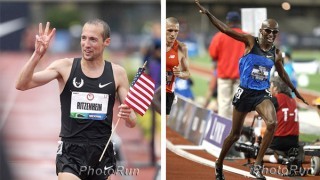
Photos: PhotoRun.net
(c) 2016 Race Results Weekly, all rights reserved. Used with permission.
EUGENE, Ore. — Between the two of them, Dathan Ritzenhein and Abdi Abdirahman have made seven Olympic teams, both on the track and in the marathon. Along with Meb Keflezighi, the pair have seemingly been constants on the Team USA roster each quadrennial.
After last Sunday’s B.A.A. 10K in Boston, both Ritzenhein and Abdirahman spoke with Race Results Weekly about the Olympic Trials, what they’d tell those competing at Historic Hayward Field, and shared a few favorite memories from the Trials. While they have not ruled out a go at the 2020 Olympics in Tokyo, neither Ritzenhein nor Abdirahman will be racing in Eugene.
Interviewed separately, the veterans reminisced about their time on the oval. Abdirahman qualified for three Olympics in the 10,000m (2000, 2004, and 2008) in addition to a marathon appearance in 2012, while Ritzenhein made the Olympic 10,000m team in 2004 and 2012 and marathon squad in 2008.
If you were to give one piece of advice to those taking the line for the Olympic Trials, what would it be?
Dathan Ritzenhein: Just when you stand on the line, the pressure seems so much. Sometimes it can seem overwhelming, and I think when I stood there a lot of times… [Ritz’s voice trails off]. As long as the training’s been there, then it’ll just happen as long as you’re confident and the fitness is there.
Abdi Abdirahman: Confidence man, you need confidence, man. Just belief in your training, belief in what you’ve done and belief in your race. There’s nothing that you can do in the next couple days that can help you at the Trials from now on. All the hay is in the barn, man. If you’re ready, you’re ready; if you’re not, you’re not. For the Trials, you’re not going to fool anybody.
Ritzenhein: The pressure is such a monster and can sit on your shoulders sometimes and just feels so heavy. But if you can look back and reflect beforehand sometimes you see the amount of work that went into it and it can make you a lot more confident.
What is the most vivid memory you have of your Olympic Trials experience?
Ritzenhein: The pressure. I remember standing there on the starting line in the pouring rain in 2012 and just being so, feeling like it was so hard to get it. I didn’t have the [10,000m] standard, everything had gone wrong, and this was one last thing that could go wrong: it was freezing rain and pouring. It felt like it was so much pressure, and then I just remember looking up and thinking ‘It can’t get any harder than this.’ And still being able to pull it off, it couldn’t get any better, that moment.
[Ritzenhein finished third in 27:36.09, qualifying for his third Olympic team.]
It was like one long battle basically that lasted for a year at that point, coming back from my Achilles surgery [in addition to finishing a devastating fourth at the Olympic Marathon Trials in January of 2012]. And so it just felt like it couldn’t get any harder but then as soon as the race was over, the relief was so… [long pause]. I don’t even remember the couple hours afterwards because it just happened and then I was so excited.
Abdi, the moment you jumped into the steeplechase pit following your 10,000m victory at the 2008 Olympic Trials in a sprint over Galen Rupp is one of my most vivid memories. How does that rank for you?
Abdirahman: It is, that’s one of my favorite moments. It was just one of the best to be honest. The Olympic Trials in 2012 was great [qualifying in the Marathon, to the surprise of many]. All my Trials were amazing. I remember how much work I put into each Trials and I put into the team.
[Without prompting, Abdirahman took a moment to reflect on what missing this year’s Trials means to him. It’s the first time he won’t be sporting a USA singlet at the Olympics since his first Games in 2000.]
Abdirahman: I wish I was running the Trials. I wish I had run a few track races. But at the same time, that’s the decision I made. Me and Dathan were talking about it. If we had focused on the Trials and got the Trials qualifier, the way we ran (at the B.A.A. 10K) how would we do? At the same time we’re happy with the decision we made and now we can focus on running and have fun at these road races.
The stress, to be honest man, the stress before the Trials, I don’t know how people do it. If you’re not 100-percent in it and if you’re not giving 110-percent; I don’t think I was ready to do that [again] mentally. It’s exhausting. You know, I’m just enjoying my running and I love running so I’m going to compete in a lot of road races and hopefully do a good fall marathon. I’ve been there four times and it’s been an amazing career.
The post Veterans Ritzenhein, Abdirahman Reflect on Olympic Trials Experience appeared first on Competitor.com.
Inspired Gear for a Summer of Speed and Celebration
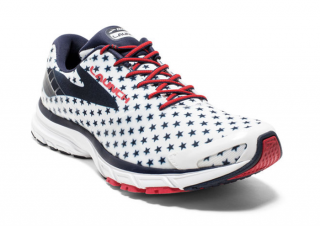
It’s an Olympic year, which means it’s a time in the U.S. that everyone loves to wear red, white and blue while celebrating all things ‘Merica. Several running brands have recently released shoes and apparel inspired by the Olympics or with a distinct American flair. Some of it is the innovative high-performance gear elite athletes will wear in training and competition, while some of it is meant for everyday runners to show their American pride. As the U.S. Olympic Trials get underway in Eugene, Ore., on July 1, the 4th of July right around the corner and the Rio Olympics not far around the bend, here’s a look at some of that speedy and celebratory gear.
Photo Gallery
1 of {count}
Back to Start
View Larger Image

Summer of Speed and Celebration
Brooks Victory Collection Launch 3—A soft and energetic high-mileage training shoe with patriotic flair. ($110)
View Larger Image

Summer of Speed and Celebration
Hoka One One Speed Evo R spikes—An innovative middle-to long-distance track spike that features an asymmetrical design. Several Hoka athletes will wear these spikes in the U.S. Olympic Trials. ($130, Available February 2017)
View Larger Image

Summer of Speed and Celebration
Stance Replay Crew Sock—Snug and supportive, above-the-ankle running socks made from a soft and smooth 200-thread count poly/nylon blend. ($18)
View Larger Image

Summer of Speed and Celebration
ASICS FuzeXSpirit—A lightweight and energetic training shoe with a red, white and blue color motif. ($110)
View Larger Image

Summer of Speed and Celebration
Nike Zoom Superfly Elite Spikes—A innovative sprinting spike designed for gold medalist Shelly-Ann Fraser-Pryce that optimizes rebound off the track with a 3D printed midsole/outsole with stiffness based on her precise power output, foot size and reaction times. ($150, Available in December)
View Larger Image

Summer of Speed and Celebration
New Balance Elite Pack: Vazee Pace 2 ($110), Vazee Rush 2 ($90), 1400v4 ($100), 1500v2 ($110) (Available after July 1)—A collection of fast training and road racing shoes worn by New Balance elite athletes.
View Larger Image

Summer of Speed and Celebration
Balega Proudly American Ultralight No-Show Socks—A no-show running sock made entirely in North Carolina from U.S.-sourced yarns and a blend of Drynamix moisture management fibers. ($12)
View Larger Image
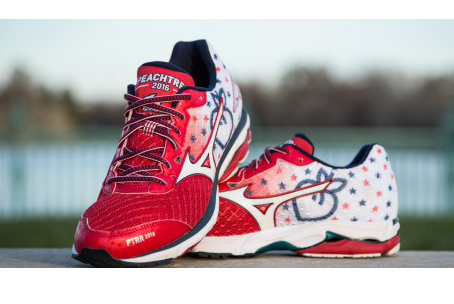
Summer of Speed and Celebration
Mizuno Wave Rider 19 Peachtree Limited Edition—Mizuno's legacy high-mileage training shoe designed to honor of the 47th annual 10K Peachtree Road Race on July 4 in Atlanta. ($130)
View Larger Image

Summer of Speed and Celebration
Brooks Victory Pacesetter Crew Socks—Mid-calf Dri-Stitch polyester/nylon blend running socks with a variety of colors and patterns. ($17)
View Larger Image

Summer of Speed and Celebration
Team USA NikeLab Dynamic Reveal Jacket—This jacket, which will be worn U.S. athletes will wear on the medal stand in the Rio Olympics, has a contemporary athletic, fitted silhouette, ribbed knit sleeves for breathability and mobility and engineered mesh back panel and side panels for optimal ventilation. ($450, Available after July 28. An unbadged version in three colorways will be available for $250.)
View Larger Image
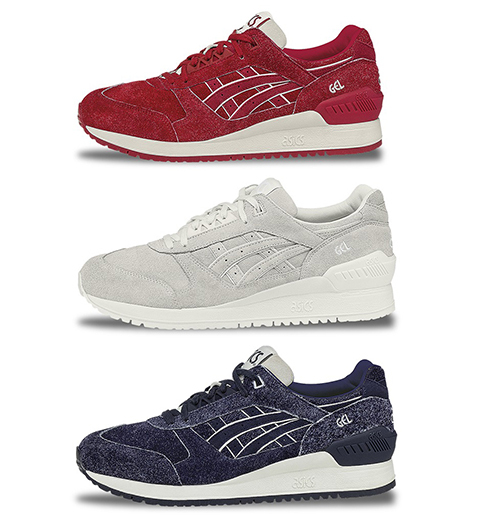
Summer of Speed and Celebration
ASICS GEL-Respector 4th of July—A casual shoe modeled off of some of ASICS' popular road running models. ($130)
View Larger Image

Summer of Speed and Celebration
Nike 2016 Track & Field Footwear Collection—This collection of 14 shoes includes discipline-specific shoes for sprinting, middle-distance running, high jump, pole vault,, long jump, shot put, javelin, triple jump, discus and the marathon. (Available in December.)
View Larger Image

Summer of Speed and Celebration
Brooks Victory Collection Ghost 9—A highly cushioned neutral road running shoe with a red, white, blue and gold color motif. ($130)

More Galleries
The post Inspired Gear for a Summer of Speed and Celebration appeared first on Competitor.com.
So How Popular Are 4th of July Races, Anyway?
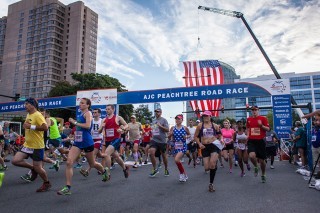
Photo: Tim Easterday
It’s the most popular running day of the summer—and there are more events than ever to cater to all the eager participants.
Running USA recently released data on running events on Independence Day. In 2015, there were more running races than ever on July 4th—485 of them, an 18 percent increase over 2014.
Those races were finished by 292,700 runners. What’s interesting is that nearly 19 percent of those finishers participated in one race—the Peachtree Road Race, a 10K in Atlanta that had 54,752 finishers in 2015. It is the largest race in the U.S.
Overall, 52 percent of those 485 races were 5Ks, while 14 percent were 10Ks.
Independence Day is surpassed only by Thanksgiving and Halloween as the most popular holidays for runners.
RELATED: Turkey Trot Participation is Still Booming
RELATED: Thanksgiving Day Calories Broken Down Into Minutes of Running
The post So How Popular Are 4th of July Races, Anyway? appeared first on Competitor.com.
June 28, 2016
Workout of the Week: Sage Canaday’s 20-Minute Tempo Run
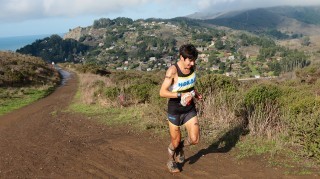
The 20-minute tempo run helps Sage Canaday prepare for a variety of distances ranging from road marathons to ultra distance trail races. Photo: Courtesy of The North Face Endurance Challenge Series
Regardless of what you’re training for, this short session will help improve your lactate threshold.
Sage Canaday of Boulder, Colo., is a bit of a renaissance man in professional running circles. He has made a name for himself in recent years with his mountain, trail and ultrarunning exploits, but he also doesn’t like to stray too far from his road racing roots.
Trying to cater his training to a wide range of disciplines that includes long trail races, steep uphill ascents and bouts of fast road running, however, can be a bit tricky, but one of Canaday’s go-to workouts—regardless of what he’s getting ready for—is a 20-minute tempo run at lactate threshold pace.
“We mainly use this as a short, efficient workout to improve lactate threshold,” says Canaday, who also coaches runners through his website, Vo2maxProductions.com. “It can easily be adapted at the start of a training cycle as a good first quality workout because it is not a painfully intense hard effort. It is also short enough that it can be used between long runs and other more intense interval workouts without risking too much overtraining. For people training for the 10K to marathon, or even an ultra, this is a great way to dial into a comfortably hard effort and build stamina.”
The workout, which is preceded by a 20-minute jog to warm up, is a continuous 20-minute run at 85-88 percent of your max heart rate, which Canaday says translates to roughly 15 seconds per mile slower than your current 10K pace (or about 10-15 seconds per mile faster than marathon pace for those focused on longer distances). It’s followed by an easy 20-minute jog to cool down.
For optimal effect, Canaday suggests running this workout on a flat stretch of road, the treadmill or even on a track.
“With a level, even surface it is a good way to judge effort by maintaining a certain pace,” explains Canaday, who says the athletes he coaches will do some variation of this workout about three times a month. “The workout can also be adapted to trails and as a solid, uphill tempo run, where one would rely more on heart rate and effort rather than pace, of course.”
The post Workout of the Week: Sage Canaday’s 20-Minute Tempo Run appeared first on Competitor.com.
Salomon Running TV Explores Alaska’s Mt. Marathon
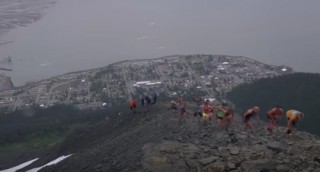
How does a race that’s about 5K in distance “totally destroy” all of its participants?
Salomon Running TV went to Alaska to find the answer. The famous Mt. Marathon on July 4th in Seward, Alaska features a ridiculous amount of climbing in just a short distance. Watch as Rickey Gates, Kilian Jornet and Emelie Forsberg take on the challenge with no prize money—just pride—on the line.
The post Salomon Running TV Explores Alaska’s Mt. Marathon appeared first on Competitor.com.
The 2016 Olympics: Humorist John Oliver Tells It Like It Is

In this hilarious video from HBO’s Last Week Tonight with John Oliver, British comedian and political commentator takes a rather skeptical (and very funny) view of the upcoming Summer Olympics in Rio de Janeiro. (Warning: This video contains adult language and humor.)
The post The 2016 Olympics: Humorist John Oliver Tells It Like It Is appeared first on Competitor.com.
June 27, 2016
Photos: Stunning Images from Marathon du Mont-Blanc 2016
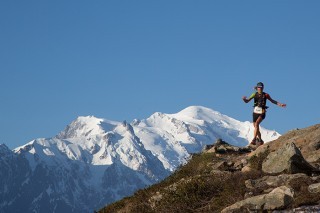
Chamonix, France, is one of the world’s preeminent trail running destinations. Not only does it have amazing trails through the heart of the Alps and some of Europe’s highest and most scenic mountains, but it also has marquee races, including the June 24-26 Marathon du Mont-Blanc weekend. More than 5,300 runners competed in one of the five races—a 10K, 23K, 42K, 80K and Vertical Kilometer. Here are some of the amazingly scenic highlights from the weekend from photographers Pierre Raphoz, Gaetan Haugeard and Leslie Delamarre.
Photo Gallery
1 of {count}
Back to Start
View Larger Image
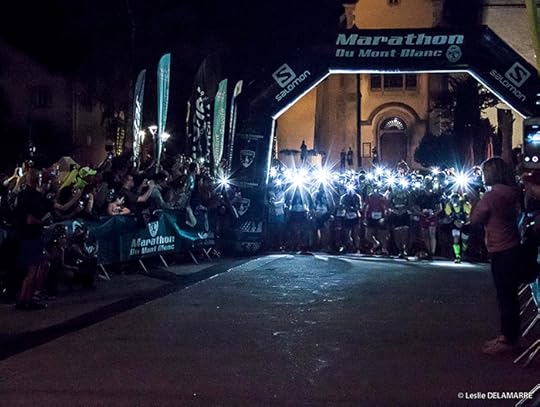
Marathon du Mont-Blanc 80K
Photo: Leslie Delamarre
View Larger Image

Marathon du Mont-Blanc 80K
Photo: Gaetan Haugeard
View Larger Image

Marathon du Mont-Blanc 80K
Photo: Gaetan Haugeard
View Larger Image

Marathon du Mont-Blanc 80K
Photo: Gaetan Haugeard
View Larger Image

Marathon du Mont-Blanc 80K
Photo: Gaetan Haugeard
View Larger Image

Marathon du Mont-Blanc 80K
Photo: Gaetan Haugeard
View Larger Image
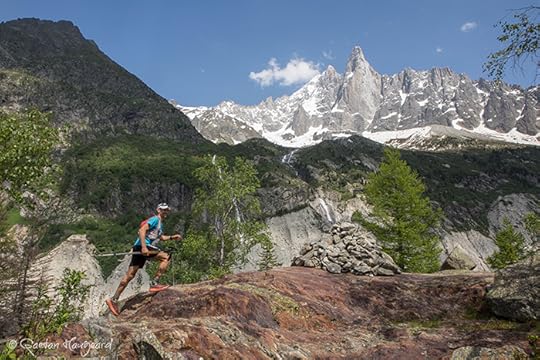
Marathon du Mont-Blanc 80K
Photo: Gaetan Haugeard
View Larger Image

Marathon du Mont-Blanc 80K
Photo: Pierre Raphoz
View Larger Image
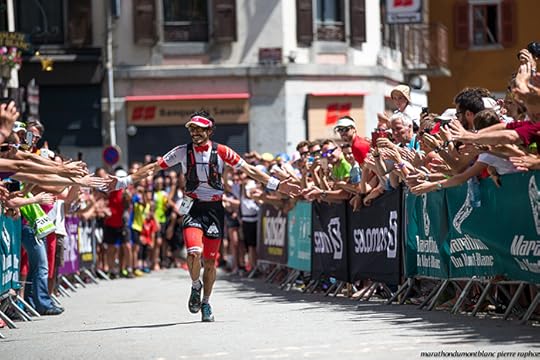
Marathon du Mont-Blanc 80K
Photo: Pierre Raphoz
View Larger Image

Marathon du Mont-Blanc 80K
Photo: Pierre Raphoz
View Larger Image
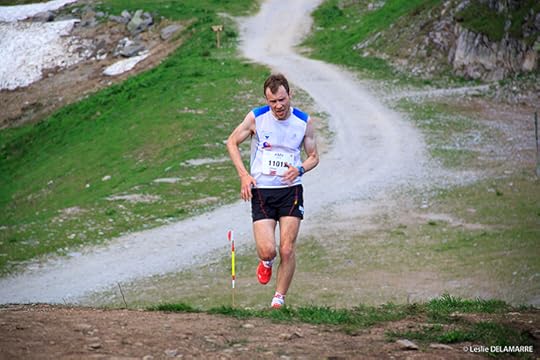
Marathon du Mont-Blanc Vertical K
Photo: Leslie Delamarre
View Larger Image
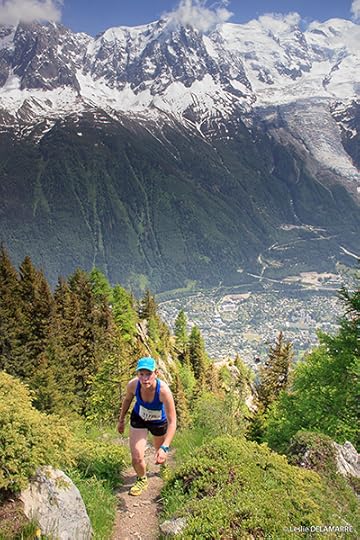
Marathon du Mont-Blanc Vertical K
Photo: Leslie Delamarre
View Larger Image

Marathon du Mont-Blanc Vertical K
American Andy Wacker (left) placed second in the Vertical K (37:39) behind Norway's Stian Angermund-Vik (35:51). Photo: Leslie Delamarre
View Larger Image

Marathon du Mont-Blanc Vertical K
Photo: Pierre Raphoz
View Larger Image

Marathon du Mont-Blanc Vertical 23K
Photo: Pierre Raphoz
View Larger Image

Marathon du Mont-Blanc Vertical 23K
Photo: Pierre Raphoz
View Larger Image

Marathon du Mont-Blanc Vertical 23K
Photo: Pierre Raphoz

More Galleries
The post Photos: Stunning Images from Marathon du Mont-Blanc 2016 appeared first on Competitor.com.
Ryan Hall's Blog
- Ryan Hall's profile
- 21 followers



